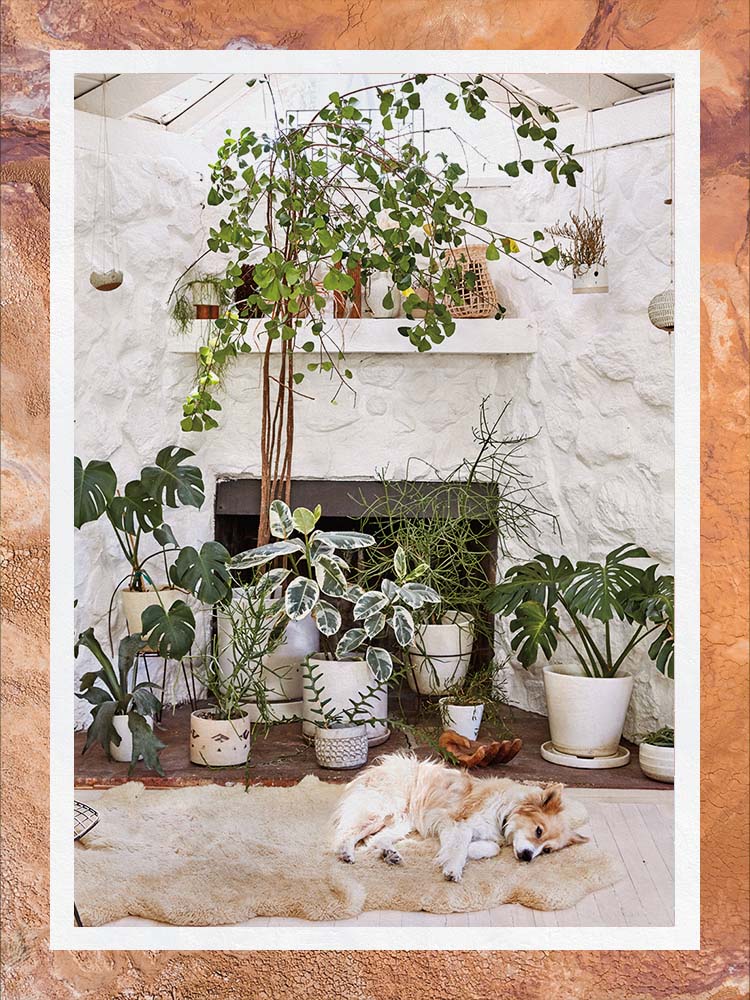The Best Soil for Indoor Plants Is Not What You Put in an Outdoor Vegetable Garden
One of these things is not like the other.
Published Apr 9, 2022 1:16 AM
We may earn revenue from the products available on this page and participate in affiliate programs.
Reading up on Domino’s shopping guides is like having your own personal product concierge. We do the tedious part—deep-dive research, hands-on testing, and tapping experts for advice—so all you have to do is hit “add to cart.” That’s why we call them Simply the Best.
Houseplants always look amazing when you’re shopping online or perusing the verdant aisles at your local garden center, but once you get them home, that’s when the real test of your green thumb begins. All plants have specific things they need in order to thrive. To help a plant look (and feel) its best, it’s crucial to know the specifics of how much moisture and light it needs. But when it comes to indoor plants, one factor is equally important and often overlooked: finding the right potting mix.
When the garden center has so many options, where do you even begin? While it’s tempting to pick a low-cost, all-purpose blend and call it a day, not all soils are created equal. The best soil for an outdoor vegetable garden, for example, has quite a different makeup than the best soil for indoor plants. “The number-one thing to watch for,” says Justin Hancock, brand marketing manager and horticulturist at Costa Farms, “is a mix that is formulated for use with indoor or container plants.” A potting mix like this will help your indoor plants absorb the right amount of nutrients, maintain the right moisture level, and drain efficiently. It might seem at first like a lot to consider, but don’t stress. We’re here to break down what makes a good potting mix for different types of houseplants, and how to pick the best one to help yours thrive.
Our Favorites
- Best overall: Espoma Organic Potting Soil Mix
- Best value: Burpee Organic Coconut Coir
- Best for succulents: Bonsai Jack Succulent and Cactus Soil
- Best for African violets: Espoma Organic African Violet Premium Potting Mix
- Best for orchids: Perfect Plants Orchid Potting Mix
- Best non-soil: Hydrofarm Clay Pebbles
Best Overall: Espoma Organic Potting Soil Mix
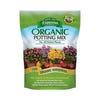
Recommended for: Any container plant | Bag volume: 4 quarts | Main ingredients: Sphagnum peat moss, earthworm castings, alfalfa meal, kelp meal, and feather meal | Organic: Yes
What we like:
- Contains a proprietary blend of mycorrhizae
- Contains natural fertilizer
- Works for all indoor and outdoor container plants
Worth noting:
- Expensive if you have a lot of potted plants or large containers
Why we chose it: A versatile, organic potting mix with natural fertilizer for indoor and outdoor use.
Espoma is a popular brand among seasoned plant lovers, and it’s no wonder; the company provides a full line of organic products fortified with natural fertilizers and amendments. This soil gets top marks with us for its versatility and the quality blend of organic matter that can help even novice gardeners grow gorgeous, showstopping plants with little effort.
A rich blend of sphagnum peat moss and humus forms the bulk of the mix, making it one of the best potting mixes for indoor plants. Organic matter like this contains essential compounds, which, with the help of added perlite, help improve soil structure, provide drainage and aeration to the roots, and supply necessary nutrients. The mix is also enhanced with Myco-tone®, Epsoma’s proprietary blend of endo- and ectomycorrhizae, proven to promote root growth, increase water uptake, and reduce drought stress and transplant shock. And if that weren’t enough, the potting mix is fortified with natural fertilizers in the form of earthworm castings, alfalfa meal, kelp meal, and feather meal, which will keep your potted plants happy and fed for months to come.
Best Value: Burpee Organic Coconut Coir
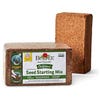
Recommended for: Large or multiple containers | Bag volume: 2.2 pounds (16 quarts hydrated) | Main ingredients: 100% coco coir | Organic: Yes
What we like:
- Adds volume without excess weight
- Sustainable alternative to peat moss
- Excellent water absorption and retention
Worth noting:
- No nutrient value; fertilizer required
- Not suitable for cacti or succulents
Why we chose it: Coconut coir is a versatile, economical, and sustainable potting medium with excellent moisture retention.
Potting soil mixes often include light, absorbent materials like peat moss to help retain moisture without weighing down the soil. But as concerns mount over the environmental impact of harvesting peat moss, many growers are switching to coconut coir. Coir is the outer shell and fiber of a coconut and a byproduct of coconut processing, making it an economical and sustainable growing medium.
Burpee Organic Coconut Coir is shipped compressed as two bricks weighing a total of 2.2 pounds, which will create about 16 quarts of growing medium once hydrated. To hydrate, place some of the fiber in a large bowl or bucket and add water. (Watch as the fibers soak up the water and expand to nearly three times their volume; it’s oddly satisfying.) It’s important to note, however, that coconut coir is strictly a growing substrate—it provides something for roots to grow into, but offers no nutritional value. Use it as part of a potting mix for indoor plants, or be sure to add a time-release or liquid fertilizer if you’re using it on its own.
Best for Succulents and Cacti: Bonsai Jack Succulent and Cactus Soil
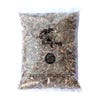
Recommended for: Succulents and cacti | Bag volume: 2 quarts | Main ingredients: Calcined clay, monto clay, and pine coir | Organic: No
What we like:
- Ultra-lightweight and airy
- Makes it nearly impossible to overwater
- Fast draining
Worth noting:
- Somewhat expensive
Why we chose it: It’s perfect for cacti, succulents, and any plants that need a fast-draining soil blend to prevent overwatering and root rot.
Cacti and succulents are especially susceptible to root rot, and a fast-draining potting mix can make all the difference. Bonsai Jack Succulent and Cactus Soil has a totally different makeup than most cacti and succulent soil: Rather than a peat-based blend with chunky bark and sand, this mix contains calcined clay and fine particles of pine bark, which form a superlight, porous potting mix that retains very little water. When used in a pot with drainage holes, it will be nearly impossible to overwater your plants.
The only real downside to this potting mix is its cost. But if you’re someone who tends to be a little heavy-handed with the watering can, this soil is worth it for the peace of mind.
Best for African Violets: Espoma Organic African Violet Premium Potting Mix
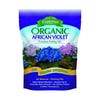
Recommended for: African violets | Bag volume: 4 quarts | Main ingredients: Sphagnum peat moss, perlite, limestone, and yucca extract | Organic: Yes
What we like:
- Helps retain moisture
- Aerates soil and promotes root growth
- Can be used for other houseplants with similar growing requirements
Worth noting:
- Only good for acidic soil plants
- Somewhat expensive
Why we chose it: This potting medium helps retain moisture, aerates the soil, and promotes root growth for African violets without synthetic plant foods or chemicals.
African violets can be finicky due to their specific soil and water needs. But if treated right, these beauties can treat you with a consistent profusion of colorful, year-round blooms. One of the best and most reliable ways to grow them well is to use a potting mix formulated specifically for African violets.
These plants require acidic soil in order to adequately absorb nutrients, so African violet potting mixes often contain additional peat moss, which increases the overall acidity. Other acid-loving plants like Christmas cacti, certain ferns, and caladiums can also benefit from this type of mix. Espoma’s mix is lightweight and fluffy, which provides proper aeration and helps deliver just the right level of water retention, keeping your potted plants slightly moist but never soggy. It’s a little pricier than standard potting mixes, but if it helps your African violets live up to their full potential, it’s worth the splurge.
Best for Orchids: Perfect Plants Orchid Potting Mix
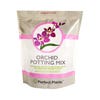
Recommended for: Orchids | Bag volume: 4 quarts | Main ingredients: Charcoal, sponge rock, pine bark, and coconut chips | Organic: No
What we like:
- Excellent water drainage
- Lightweight
- Can be used for other epiphytic plants
Worth noting:
- Only good for epiphytic plants
Why we chose it: This balanced blend of natural materials won’t suffocate or compact orchid roots.
Tropical orchids are epiphytes, which means in their natural habitat they don’t grow in soil but by attaching their roots to the bark of trees, where they absorb moisture and dissolved nutrients from their surroundings. With their roots exposed, they also receive good air circulation and plenty of light. To achieve this at home, orchids need a specially formulated growing medium.
Perfect Plants Orchid Potting Mix features all-natural ingredients that encourage orchid roots to climb and expand while providing a well-balanced environment for them to grow and absorb nutrients. It’s an excellent substrate for your orchid to grip and wrap its roots around, while allowing plenty of light and airflow. The bark in the orchid mix soaks up the right amount of water to keep the soil moist without waterlogging the roots. This mix can also be used for other epiphytic plants, such as bromeliads and certain types of ferns.
Best Non-Soil Hydrofarm Clay Pebbles
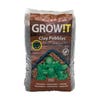
Recommended for: Any plant that needs moist soil but good drainage | Bag volume: 25 liters | Main ingredients: 100% natural clay | Organic: No
What we like:
- Prevents plants from completely drying out
- Can be added to all-purpose potting mix to improve drainage
- Makes a pretty top dressing
Worth noting:
- No nutrient value; fertilizer required
Why we chose it: Clay pebbles allow roots to absorb water directly without suffocating them.
The best soil for indoor plants might not be soil at all: Clay pebbles are known in the horticultural industry as lightweight expanded clay aggregate (LECA). It is an alternative to potting soil commonly used in hydroponic gardening, but it’s growing in popularity as a planting medium for all types of indoor houseplants. With the right care, almost any indoor plant can thrive in a pot filled with LECA.
Hydrofarm Clay Pebbles is an excellent choice for busy plant parents. The porous clay pebbles can retain a great deal of water, but release it for the plant’s use a little at a time. This prevents the plant from completely drying out while still providing adequate drainage. It’s ideal for those of us who want to spend a little less time on watering or—let’s face it—are maybe just a bit forgetful. It’s made from 100 percent natural clay but, like coconut coir, has no nutritional value, so a good hydroponic fertilizer is required to provide plants with the nourishment they need.
How We Chose These Products
The houseplant industry has seen a major boom in the past few years, with many new gardeners seeking the best soil mix for their indoor plants. We chose these indoor potting mixes based on hands-on testing, research, and brand reputation, as well as ingredients, value, and ease of use. There are so many soil blends to consider when shopping, though Hancock shares a quick tip: “When I’m shopping for a potting mix, I pay attention to how the product feels in the bag. It should be loose and almost fluffy—I avoid mixes that feel dense.” We also paid attention to plant type and whether organic materials were used in the mix.
Our Shopping Checklist
Potting Mix vs. Soil
Most potting mixes formulated for indoor or container use are sterile and do not actually contain soil. Calling it “soil” is a misnomer—it’s technically a growing substrate. These mixes are typically a combination of sphagnum moss, perlite, and vermiculite. Some mixes may include bark, sand, and fertilizer. “Soil-less mixes provide an optimal mix of water-holding capacity and aeration,” says Hancock. Topsoil, however, also called garden soil, is true soil that has been enriched with compost and other organic matter. This is best for use in raised garden beds or to improve the quality of native soil. It’s heavier in texture and holds water much longer than potting mixes. This soil is not used in containers because it is usually too heavy and dense for potted plants.
Organic vs. Inorganic Ingredients
Most potting mixes are comprised of peat moss or coir, perlite, and vermiculite. Some add bark, compost, or fertilizer to feed the plants, while some add a wetting agent to improve drainage and increase moisture retention. Organic potting soil only contains natural organic matter. It has natural fertilizer materials such as worm castings and compost and does not contain chemical wetting agents or fertilizers such as ammonium nitrate or potassium sulfate. The majority of potting mixes have an organic base; however, the USDA does not currently regulate how potting soils are labeled. Potting soil may be labeled “organic” as long as it technically only contains natural, carbon-based ingredients, so keep an eye out for synthetic fertilizers listed on the package.
Aeration and Drainage
Soil protects and supports a plant’s root system. Plants need water and air around their roots to thrive, so a poorly draining planting medium can starve the plant of air and induce root rot. The best soil mix for indoor plants should offer plenty of space for roots to grow with proper drainage. These mixes typically contain bark, sand, and perlite. Different potting mixes drain and dry out faster than others, so the best potting mix will depend on the type of plant.
Ask Domino
Q: I bought a chic terracotta pot. What’s the best way to repot indoor plants?
Natural terracotta pots are a wonderful option for houseplants, as they naturally promote aeration and drainage. First of all, make sure your pot has a drainage hole. If not, the pot should only be used as a decorative catch pot. Gently remove the plant from the current pot, then loosen the roots to remove the old potting medium. Add it to the new pot with fresh potting mix, and water the plant thoroughly, allowing the excess water to completely drain.
Q: Should I sterilize soil before using it?
Potting mixes are already sterile. You only need to sterilize the mix if you reuse planting mix from a previous plant that suffered any pest or disease issues. You can bake the soil in an oven at 200 degrees Fahrenheit for half an hour or so.
Q: Can I use 100 percent organic material to grow healthy plants?
Absolutely. Coconut coir is an example of a 100 percent organic material that many commercial growers use.
Q: I’m running out of my old potting mix and want to switch to a new blend—will my plants react poorly?
If the new potting mix matches your plants’ needs, it shouldn’t matter. Plants tend to experience transplant shock because their roots are disturbed or if they are thrown into a new growing environment, but swapping one potting mix for another should be fine.
Q: Can I mix topsoil and potting soil?
You can mix potting soil with topsoil to help lighten the topsoil for outdoor plants in raised garden beds or in-ground beds, but do not use topsoil in containers, indoors or outdoors—it’s too dense.
The Last Word
Most all-purpose potting mixes will work for just about any plant in a container. Espoma Organic Potting Soil Mix is an all-inclusive mix with the right balance of organic matter that promotes aeration and good drainage for a variety of plants. It also features natural fertilizers and mycorrhizae, which help plants effectively absorb nutrients. All in all, it’s the perfect blend that will help houseplant lovers grow healthy plants with minimal effort.
